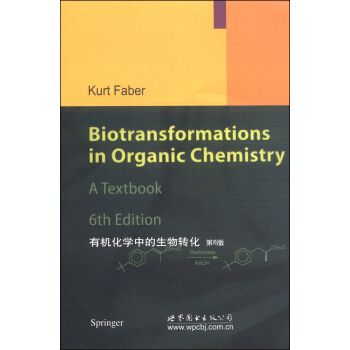《有機化學中的生物轉化(第6版)》是2014年9月1日世界圖書出版公司出版的著作,作者是[奧]費伯(Kurt Faber)。
基本介紹
- 中文名:《有機化學中的生物轉化(第6版)》
- 作者:[奧] 費伯(Kurt Faber)
- 出版社:世界圖書出版公司
- 出版時間:2014年09月01日
- ISBN:9787510078729

《有機化學中的生物轉化(第6版)》是2014年9月1日世界圖書出版公司出版的著作,作者是[奧]費伯(Kurt Faber)。
《有機化學中的生物轉化(第6版)》是2014年9月1日世界圖書出版公司出版的著作,作者是[奧]費伯(Kurt Faber)。目錄1 Introduction and Background lnformation1.1 I...
有機化學中的生物轉化 (第6版)《有機化學中的生物轉化 (第6版)》是世界圖書出版公司出版的圖書,作者是Kurt Faber
《有機化學(第六版)》是由李景寧主編、高等教育出版社2018年出版的“十二五”普通高等教育本科國家級規劃教材,可作為高等師範院校化學類專業教材,也可供其他各類院校相關專業選用和參考。該書共二十一章,是在第五版教學實踐的基礎上...
《有機化學中的生物轉化》是2006年化學工業出版社出版的圖書,作者是法貝爾吉愛國。本書系統地介紹了有機化學中生物轉化的相關知識。圖書簡介 簡介:本書為奧地利格拉茨大學有機化學研究所庫爾特·法貝爾編著的教科書,堪稱是這個領域的經典...
有機物質的生物轉化維持生物生命活動所必需的能量和物質,人造惰性有機物一般較難被生物所轉化而污染環境。化學毒物在體內的吸收、分布和排泄過程稱為生物轉運。化學物的代謝變化過程稱為生物轉化。肝臟是生物轉化作用的主要器官,在肝細胞...
生物轉化指毒物經過酶催化後化學結構發生改變的代謝過程, 即毒物出現了質的變化。生物轉化是毒物在生物體內消除之前發生的重要事件,其典型結局是產生無毒或低毒的代謝物。因此曾將生物轉化與解毒作用等同起來。但是,在不少情況下,生物...
因而許多化學家都認為,在生物體內由於存在所謂“生命力”,才能產生有機化合物,而在實驗室里是不能由無機化合物合成的。1824年,德國化學家維勒從氰經水解製得草酸;1828年他無意中用加熱的方法又使氰酸銨轉化為尿素。氰和氰酸銨都...
一、有機物及有機化學和生物化學的認知過程1 二、有機化合物的特點2 三、有機化合物的分類、性質及反應基本類型2 第二節生物分子與生命組織5 一、生命活動的物質基礎——原生質5 二、生命活動的基本單位——細胞6 三、生命活動的...
四、胺的化學性質265 五、重氮鹽的反應269 六、重氮甲烷271 七、醯胺的Hofmann重排(降解)反應273 八、季銨鹼的Hofmann消除273 第三節生源胺的生物合成及其意義274 Summary275 習題276 第十三章含硫、磷、砷有機化合物278 第一節有機...
有機化學中的生物轉換(第3版)(BIOTRANSFORMATIONS IN ORGANIC CH 《有機化學中的生物轉換(第3版)(BIOTRANSFORMATIONS IN ORGANIC CH》是世界圖書出版公司北京公司出版的圖書,作者是K.Faber。
酶是生物發育成長不可缺少的催化劑,因為生物體進行新陳代謝的所有化學反應,幾乎都是在生物催化劑酶的作用下完成的。多肽是涉及生物體內各種細胞功能的生物活性物質。肽鍵是胺基酸在蛋白質分子中的主要連線方式,肽鍵金屬離子化合而成的金屬...
譯者的話 第1章 生物化學中的基本反應機理 第2章 生物分子 第3章 脂質代謝 第4章 碳水化合物代謝 第5章 胺基酸代謝 第6章 核苷酸代謝 第7章 一些天然產物的生物合成 第8章 生物化學轉化總攬 附錄A 附錄B 附錄C 附錄D ...
